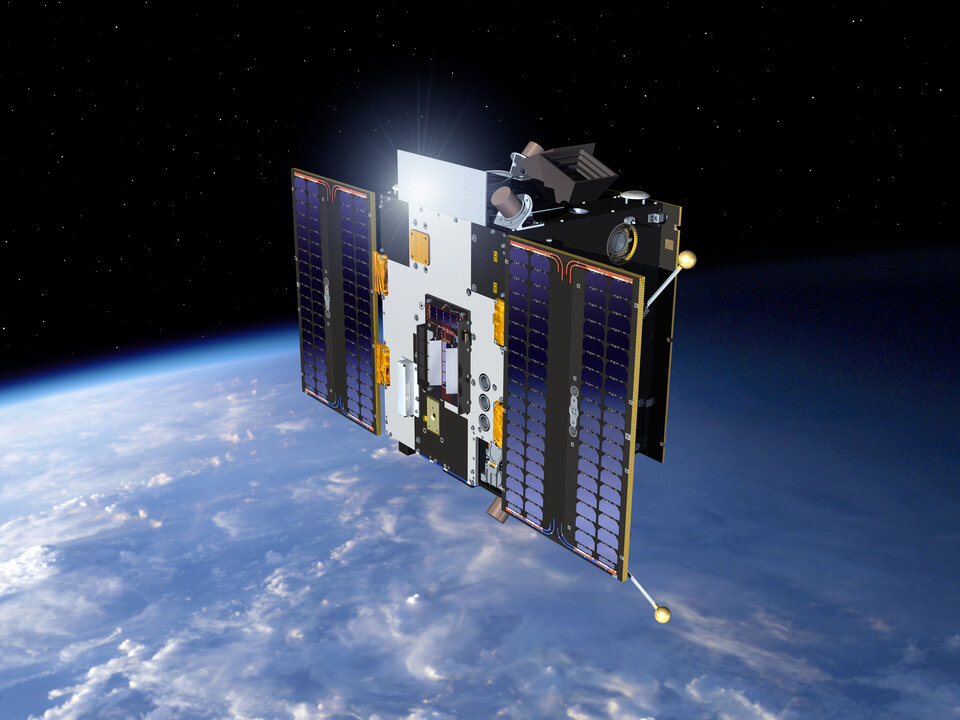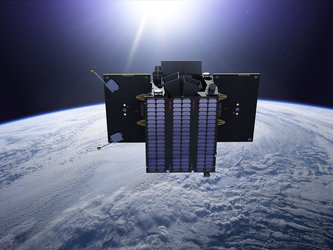ESA's space weather station Proba-2 tracks stormy Sun
Researchers gathered for European Space Weather Week have been presented with the latest results from ESA’s own space weather station: the Proba-2 microsatellite.
The unpredictably stormy Sun drives space weather: surges of charged particles can damage satellites, impede space-based services and affect terrestrial power networks.
Less than a cubic metre, Proba-2 was launched on 2 November 2009 as a technology demonstrator but is now working as a science mission, having exceeded its two-year design life.
Proba-2 science data are also useful for space weather monitoring: two instruments watch the Sun, with two more studying the Sun’s influence on Earth’s topmost ionosphere.

The mission is keeping busy: it has gathered upwards of 400 000 images of the Sun and made almost 20 million in-situ ionospheric observations.
This year’s European Space Weather Week, taking place in the Palais des Congres in Namur, Belgium, from 28 November to 2 December included presentations by users of Proba-2 data from all over Europe.
“Proba-2 science data are also distributed to scientific teams worldwide, from the US to India,” noted Marie Dominique of the Royal Observatory of Brussels, responsible for Proba-2’s Sun-watching sensors.
Sampling space

Rather than being trained on the Sun, some 150 million km away, Proba’s two other main sensors are investigating the immediate vicinity of the microsatellite, circling the poles at an altitude of 700 km.
“Next year, we plan to release the complete processed archive of our results so far,” said Stepan Stverak, of the Czech Republic’s Astronomical Institute.
“This dataset will then be available to the scientific community for statistical study, to help identify how ionospheric plasma can be perturbed by solar and space weather events.”
Results will also be cross-checked with France’s Demeter satellite, which sought ionospheric disturbance caused by seismic activity – a potential method of predicting earthquakes.
Proba-2 and Demeter flew in similar orbits before the French satellite ended its mission last year.
New technology taking flight
ESA’s ‘Project for Onboard Autonomy’ family of demonstration satellites allows European companies to test new technologies in space.
Proba-2’s 17 technology payloads include: a flight computer built around ESA’s latest-generation chip (yet to require a single reset), a fibre sensor ‘nervous system’ monitoring temperatures and fuel tank pressure, and nitrogen gas generators to repressurise the resistojet thruster used for orbit maintenance – giving the mission a new lease of life each time they are triggered.
“The idea behind Proba is to test advanced technologies in a way that the scientific community also finds useful,” remarked Frederic Teston of ESA’s In-Orbit Demonstration Programme.
“Gaining the interest of users represents the best proof our technologies work well.”
Proba-2 is designed for maximum autonomy. It is operated by a small team keeping standard office hours, based at ESA’s ground station in Redu, Belgium.
“We work with Redu on a very flexible basis,” Ms Dominique added. “We can easily react if solar activity suddenly changes – in a few hours we change the settings of our instruments, or even the pointing direction of the satellite, for instance, to track coronal mass ejections.”















 Germany
Germany
 Austria
Austria
 Belgium
Belgium
 Denmark
Denmark
 Spain
Spain
 Estonia
Estonia
 Finland
Finland
 France
France
 Greece
Greece
 Hungary
Hungary
 Ireland
Ireland
 Italy
Italy
 Luxembourg
Luxembourg
 Norway
Norway
 The Netherlands
The Netherlands
 Poland
Poland
 Portugal
Portugal
 Czechia
Czechia
 Romania
Romania
 United Kingdom
United Kingdom
 Slovenia
Slovenia
 Sweden
Sweden
 Switzerland
Switzerland




























